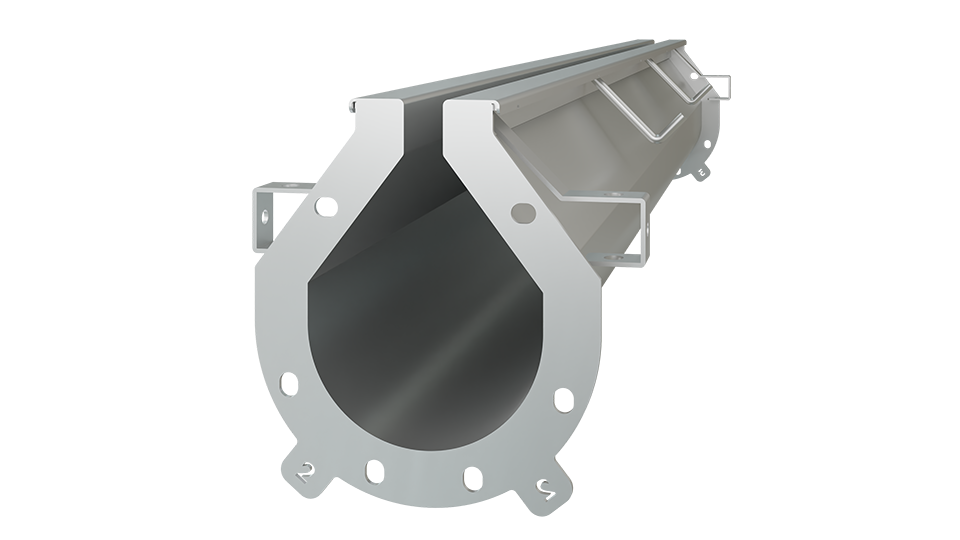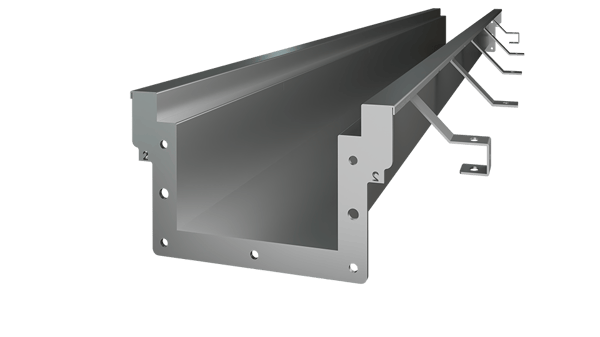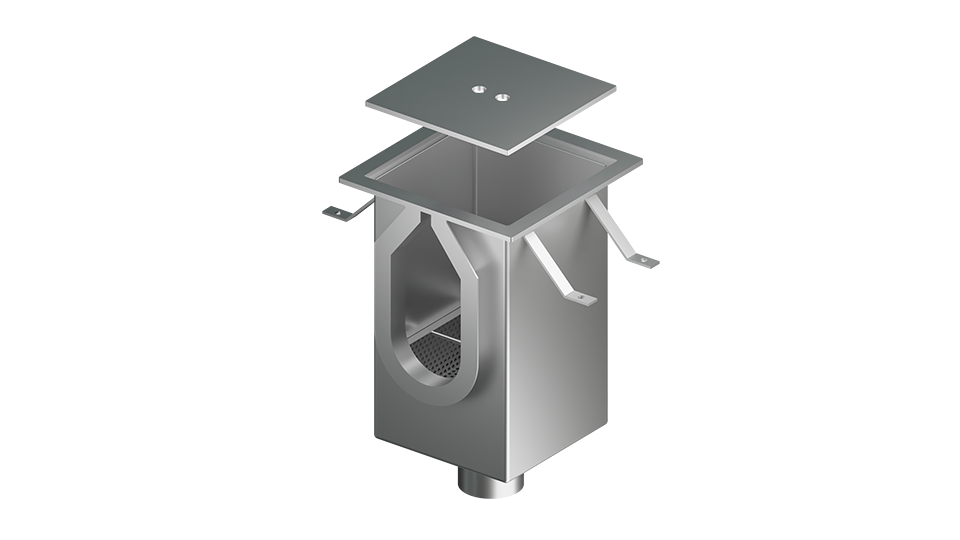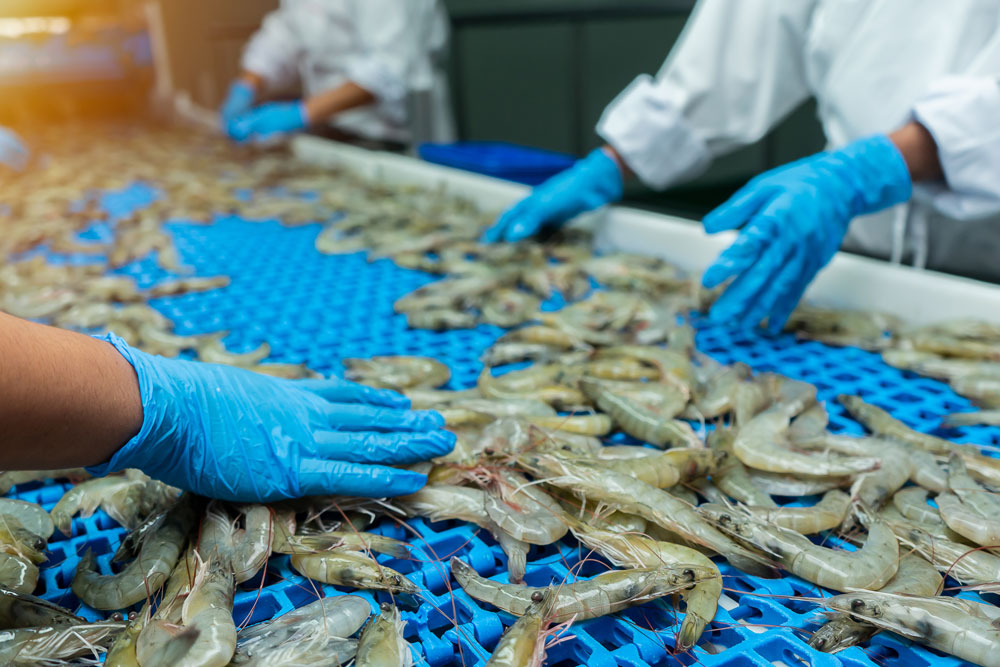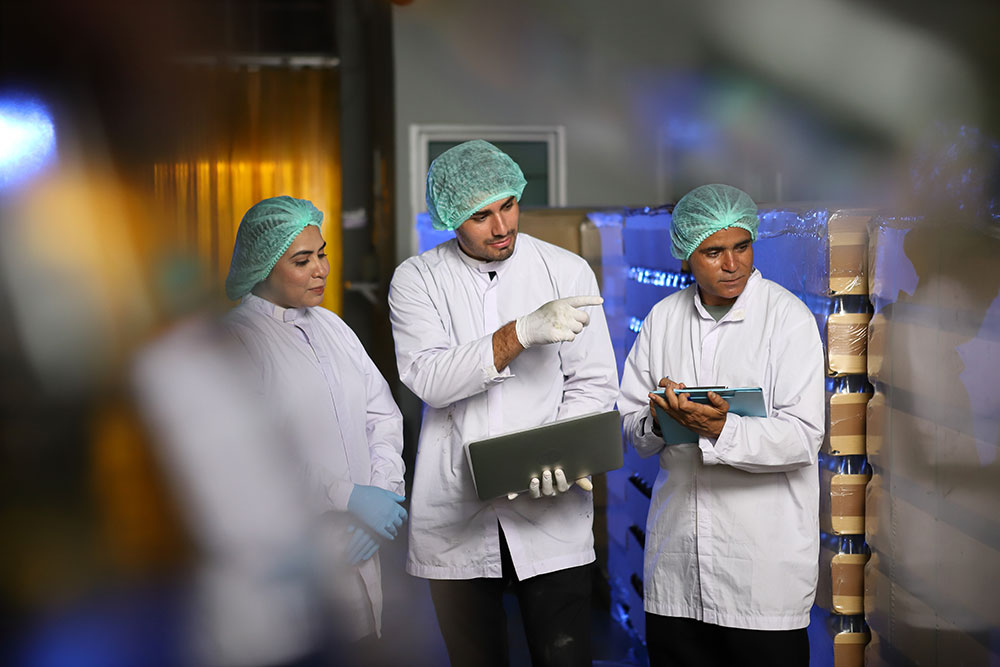Creating safe and sanitary food processing facilities is the first priority for food safety. Different foods have different facility requirements; there are strict requirements for a poultry processing plant design. While the overall layout can different between facilities, the requirements never change.
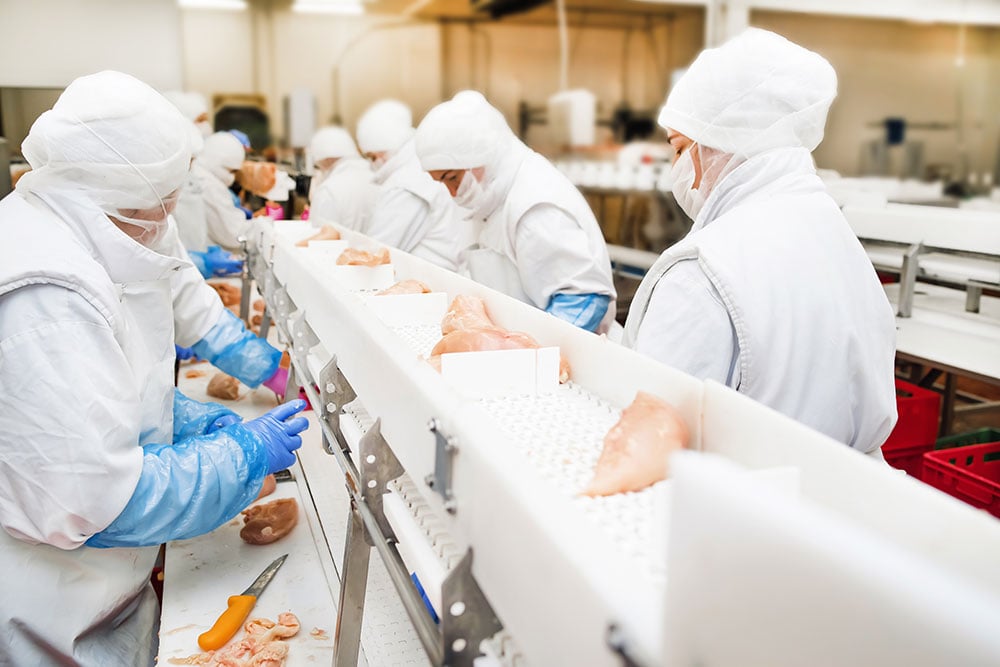
Abiding by these requirements and other guidelines is essential in creating a safe facility that is free from harmful bacteria and foodborne pathogens. Here are some of the more essential aspects of a processing plant design to pay careful attention to.
A Note on Designing Poultry Processing Plants
Size is vital for the layout and design of poultry processing plant facilities; it will affect certain layout aspects, as considerations are made based on available space. The ideal layout will have the plant divided into principal activity areas that are carefully analyzed to ensure a cohesive design that provides adequate space for equipment and movement. Inadequate planning of a facility layout, and a lack of foresight, can result in low operating efficiency that requires adopting new processing procedures and equipment without making significant structural changes or disrupting operations.
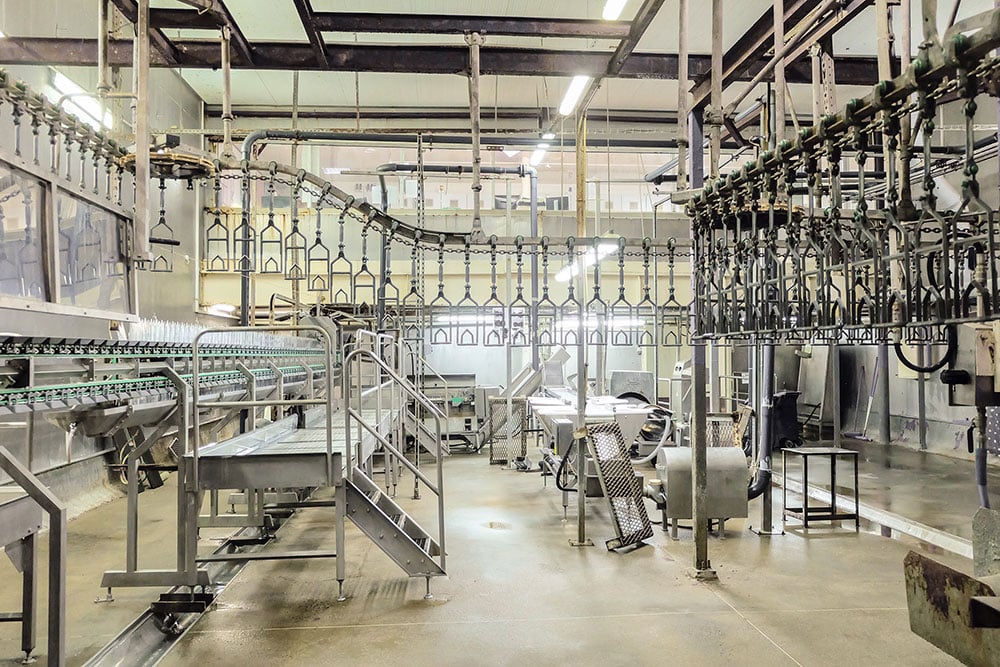
Planning the layout of a poultry processing plant can be broken down into four major steps:
- Gather all the necessary facts, like the total volume of product the plant will handle, production rates, styles of product, etc., for present and future operations.
- Determine the processes involved and the sequence of operations.
- Establish the locations of departments, activity areas, and workstations.
- Establish a detailed flow of products and the layout of machinery and equipment for each area.
Essential Aspects in a Poultry Processing Plant
Equipment
The equipment you choose for your facility is vital. As you make plans, consider what equipment your facility will need and keep the size of each production area in mind. Each piece of equipment should be high-quality and fit comfortably into its designated area, while still allowing for movement between various pieces. Conveyor belts are one essential piece of equipment; others include freezers, scalders, and packaging equipment.
Flooring
Having the right flooring in your poultry processing plant design is critical. Regular flooring is not an option in processing facilities; bacteria can quickly become stuck in the grout and create a risk of contamination. Grout can also hold onto mold, mildew, and dirt more readily and be more challenging to clean. Instead, a facility's floors should be a concrete base, which is easy and quick to install. Since concrete is a porous material; you must cover it with an epoxy or polyurethane floor coating that meets food safety and poultry processing plant standards. Many options are available that provide durable, easy-to-maintain, and sanitary finishes.
A Factor You Don't Want to Overlook
One factor that is crucial but often overlooked is drainage. Having adequate drainage is essential for the plant's interior and exterior. Before choosing a system, you must familiarize yourself with the local and federal codes about sewage and drainage, particularly regarding poultry processing plants.
Interior drains must be designed to handle wastewater and other production byproducts like blood, offal, grit, and more. Some general requirements for drainage in poultry processing plants include the following:
- Ensure adequate floor slope and spacing of floor drains
- Adequate size and slope of drainage pipes and cutters to handle maximum runoff without flooding
- Freedom from any obstructions or low points that might cause an accumulation of solid materials
- All necessary traps and vents for the drainage lines
- The proper scaling of inlets to protect the system from outside line surcharges and prevent pests from entering
- Supply provisions for cleaning the drainage line if it becomes clogged
- Must have separate lines for toilet and processing waste
The placement of your drainage systems is also important to consider. The strategic placement of drains is also important. When considering the layout, consider the ideal placement carefully; you want waste to collect easily and quickly.
An Option to Consider
FoodSafe Drains offers many drainage options ideal for a poultry processing plant. Their systems meet food safety requirements and are NSF/ANSI/3-A certified, meaning the systems have a smooth interior with fully radius edges that eliminate bacteria harboring points. They also use T304 and T316 stainless steel in their construction to ensure a durable build.
The FoodSafe Slot Drain
The FoodSafe Slot Drain is a linear, subsurface system based on the more commonly seen trench drain. The Slot Drain comes pre-assembled to eliminate any seams and grooves that would otherwise be present, to ensure there is no way for bacteria to become trapped. It also comes pre-sloped to make installation significantly easier.
Unlike other systems, the Slot Drain has a slim channel opening, no more than 1.25 inches in width, which eliminates the need for a grate while allowing flow rates up to 27 gallons per minute per foot of drain. The 10,000 Series model has a forklift rating, to ensure that it will not bend, bow, or break under the pressure of heavy facility equipment. It is also compatible with clean-in-place (CIP) technology.
The FoodSafe Trench Drain
The FoodSafe Trench Drain is a traditional system with a wide, grate-covered channel that has a larger capacity. It can more readily handle solid waste without clogging. The traffic and tamper-proof grates are magnetically locked to allow only authorized personnel access. Like the Slot Drain, it is forklift-rated and compatible with CIP technology.
FoodSafe Hub and Drains
Other options are the various FoodSafe Area and Hub Drains, ideal for smaller spaces where a larger system may not fit. Like the other systems, they are forklift-rated, to help ensure their durability, and they have a durable grate with a magnetic, locking tamper-proof strainer basket to help catch solids.
This category also includes the FoodSafe Floor Sink, a new take on the traditional point drain. It has the same general structure as the other area and hub drains but it is larger to allow for larger flow rates and particulate removal.
The FoodSafe Catch Basin
The FoodSafe Catch Basin and Strainer Basket are compatible with all the systems. It helps to catch large particles and debris and prevent them from entering the channel and pipes, where it can potentially create clogs that overflow the system. It is equipped with the same tamper-proof magnetic strainer and a durable, forklift-rated grate cover.
Other products from FoodSafe Drains include a Floor Clean Out for easy access to clogs and blockages in the drain. There is also the Foul Air Trap, which helps keep gasses from flowing back into your facility and is recommended when you can't use a P-Trap. Finally, there is the P-Trap or Running Trap, which serves the same purpose as a Foul Air Trap.
Designing a Reliable Poultry Processing Plant
The layout and design of poultry processing plant facilities are critical to ensuring safe, sanitary operations and products. The process takes time and planning, with many details to consider. You must consider everything from the flooring material to the placement of each piece of equipment to ensure a smooth, even flow throughout the facility. In addition to all of this, you also need adequate drainage to help maintain the cleanliness of the facility and help minimize the risk of bacteria growth and contamination. FoodSafe Drains is here to help.
Contact FoodSafe Drains today to learn about the wide selection of products and which are best for your facility.
